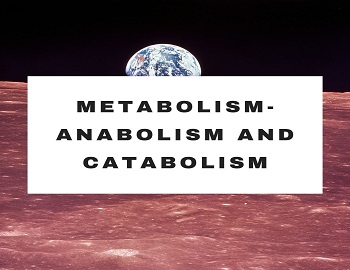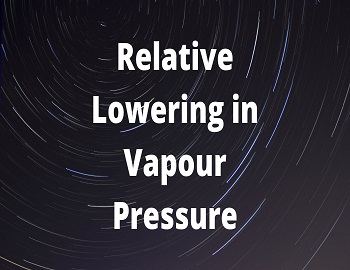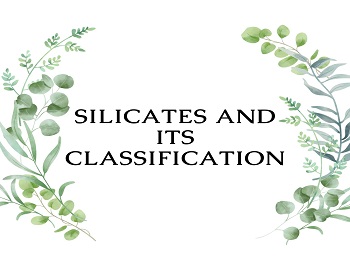Table of Contents
Colloidal State of Matter:
Thomas Graham (1861) classified soluble substances into two classes on the basis of the rate of diffusion of their solutions- Crystalloids and Colloids.
- Crystalloids- The substances which can be easily obtained in the crystalline state, diffuse rapidly in solution and readily pass through animal or vegetable membrane due to the small size of their particles in the solution are known as crystalloids. Example- sugar, urea, common salt, CuSO4 etc.
- Colloids- The substances which are generally amorphous in nature, diffuse very slowly in solution and show a little or no tendency to pass through animal or vegetable membrane due to their bigger particle size in solution are known as colloids. Example- starch, gelatin, gum, albumin, proteins etc. (The name ‘colloid’ is derived from the Greek word “Kolla” meaning Glue-like).
This shows that Graham’s classification of substances into colloids and crystalloids is based on the size of particles. The size of particles can be changed by using suitable methods due to which a crystalloid may be made to behave like a colloid and vice-versa. Example- NaCl behaves like a crystalloid when dissolved in H2O but behaves like a colloid in benzene. Similarly, soap is a typical colloid in water but acts as a crystalloid in alcohol. Therefore, a colloidal substance does not represent a separate class of substances. Further researches have shown that a substance behaves as a colloid when the solute particle size lies between 1-100 nm (10-9 m to 10-7 m). If the size of solute particles is greater than 100 nm, it exists as suspension and if the particle size is less than 1 nm, it exists as a true solution and behaves like a crystalloid. Thus, a colloid is not a substance but is a particular state of the substance which depends upon the size of its particles. The colloidal state of matter is regarded as an intermediate state between a true solution (10-10-10-9 m) and coarse suspension (10-7-10-5 m).
Components of Colloidal Solution:
The colloidal state of matter is heterogenous in nature which is made up of two parts-
- Dispersed Phase- It is the component present in small proportion and consists of particles of colloidal dimensions (1-100 nm). It is also known as the discontinuous or internal phase.
- Dispersion Medium- It is the solvent in which the particles of a solute having colloidal dimensions disperse or scatter to form a colloidal solution. It is also known as the continuous or external phase. For example- in a colloidal solution of sulfur in the water, sulfur particles constitute a dispersed phase and water is the dispersion medium.
Classification of Colloids:
The colloidal solutions can be classified in a number of ways-
(1) On the basis of the physical state of components- On this basis, colloidal solutions are of eight types (because the colloidal state of gas in gas is a true solution) which are as follows-
| Dispersion Medium | Dispersed Phase | Name of Colloidal Solution | Examples |
|---|---|---|---|
| Gas | Liquid | Aerosol | Mist, Fog, Cloud, Insecticide sprays |
| Gas | Solid | Solid Aerosol | Smoke, Dust-Storm |
| Liquid | Gas | Foam | Soap Lather, Soda Water, Whipped Cream |
| Liquid | Liquid | Emulsion | Milk, Cod Liver Oil, Cream |
| Liquid | Solid | Sols | Paints, Muddy Water, Gold Sol |
| Solid | Gas | Solid Foam | Rubber, Foam |
| Solid | Liquid | Gels | Butter, Cheese, Curd |
| Solid | Solid | Solid Sols | Minerals, Alloys |
(2) On the basis of nature of dispersion medium- The colloidal solutions having fluid-like appearance are called solutions i.e. in these solutions, the dispersion medium is generally liquid. Depending on the nature of the dispersion medium, some specific names of colloids are-
- Water ——–> Hydrosols or Aquosols
- Alcohol ——–> Alcosols
- Benzene ——–> Benzosols
- Gases ——–> Aerosols
(3) On the basis of interaction between the dispersed phase and dispersion medium- On this basis, colloids can be classified into two classes-
- Lyophilic or Intrinsic Solutions (Solvent Loving)- These are those colloidal solutions in which the dispersed phase particles have a great affinity for the dispersion medium. Example- solutions of Gelatin, Starch, Proteins etc.
- Lyophobic or Extrinsic Solutions (Solvent Hating)- These are those colloidal solutions in which the dispersed phase particles have little or no affinity for the dispersion medium. Example- Solutions of metals like Ag, Au, solutions of metal hydroxides (Al(OH)3, Fe(OH)3 ) and solutions of metal sulfides like As2S3.









Comments (No)